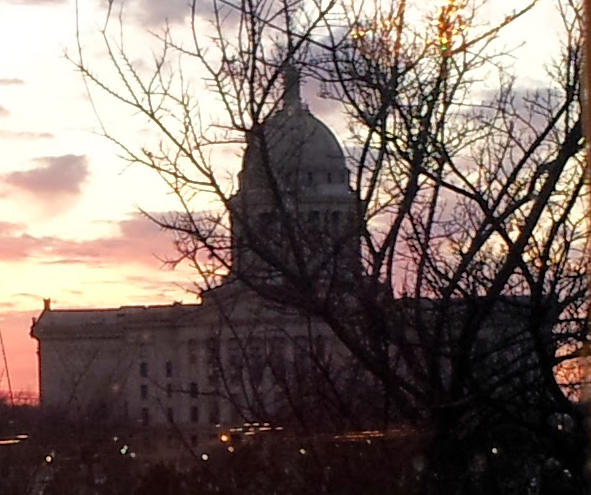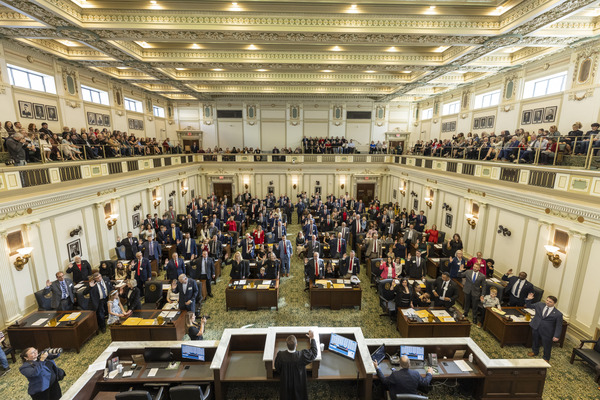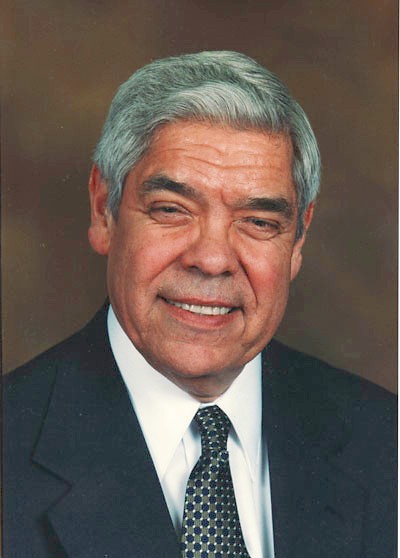Will State Borrow More Money for Indian Cultural Center?
State bond debt payments on the project have been running at about $5.5 million per year. An additional $40 million bond issue would increase annual debt payments by approximately $3.5 million, pushing annual obligations for debt service to nearly $9 million. Debt service for the bonds already issued will total $75.6 million over the course of the next fifteen years. This does not include appropriations to NACEA for operations.
This will be the fourth attempt to secure the additional funding from the Legislature. In the 2010 legislative session, NACEA pushed for a $43 million bond proposal. That bill never made it to a vote in either chamber of the Legislature.
In May of 2011, a measure was working its way through the Legislature for $40 million in additional bond money. The Oklahoma House approved the bill and the Senate Democrat Leader, Sen. Andrew Rice (D-Oklahoma City), challenged Senate Republicans to bring the issue to a vote. Rice said all 16 Senate Democrats were ready to vote for the bond proposal. But, against the wishes of Gov. Mary Fallin, Senate Republican leaders blocked the proposal. Senate President Pro Tem Brian Bingman (R-Sapulpa), said the bill would not be heard because of questions about the project's finances and concern among Republican senators over increasing the state's debt load. If more bond money is needed, Bingman said, he wanted to be sure the next state investment in the project is its last one.
In the final days of the 2012 legislative session, the Senate voted 24-22 in favor of the bond proposal, but 25 votes (a majority of the 48 member Senate) is required to approve bond obligations. Several senators were concerned about how the previous money had been spent and wanted an audit before agreeing to more funding. The vote on the bonds was one of the ten votes included in the 2012 Oklahoma Conservative Index rating state legislators.
After the failure in the last session, Gov. Mary Fallin asked state Auditor and Inspector Gary Jones to conduct an audit. Jones and his staff completed the audit and issued a report on October 17, 2012. The NACEA cited the audit in their announcement of another push for bond funding. "We are pleased to report that no financial wrongdoings were found." However, if one reads the audit report, one may reach a different conclusion.
To the extent that no fraud or other criminal activity was uncovered in the audit, the claim of no "financial wrongdoings" may be correct. But, the audit report certainly does not give the agency a clear stamp of approval for their management of the project. Instead, it places much of the blame for the funding problem on poor decisions made by the agency. In his cover letter on the audit report, Jones says: "The Board chose the "Vision Plan,' the most elaborate and expensive of the options provided by the project architects in 2004. Projects on such a grand scale require substantial funding, however, and at no time has the Board's available funding closely approached its projected expenditures." The option chosen by the board was approximately $83 million more than the least costly plan, which exceeds their current funding shortfall.
Jones notes that rather than reconsidering their costly decision, the agency continued down the same questionable path. "It is reasonable to expect that funding shortfalls might lead to a reevaluation of the plans by the Board; if an everyday citizen loses his or her job, he or she might eliminate cable service, a gym membership, or weekly pizza night. The Board has taken the opposite approach, and rather than evaluating less costly options that would still allow construction of a world-class facility, has maintained their vision, with an expectation that taxpayers will foot the bill," said Jones.
Jones also blames problems on the inexperience of the board. "The Legislature assigned the Board the monumental tasks of creating and operating a state agency and constructing and operating a museum, despite Board members' lack of experience in both areas. These responsibilities were assigned without the proper support and tools, such as more comprehensive board membership criteria, greater oversight and project leadership."
The audit report does not instill confidence that the current management will succeed. "Insufficient planning has clearly negatively affected construction of the AICCM over the course of eighteen years, as the Agency has yet to mitigate the risk of inadequate funding to meet requirements for project completion. Insufficient planning also threatens the Agency's ability to secure the required funding to operate the museum once complete. Board members do not appear to have a consistent understanding of future operational funding needed, which might result in a greater state obligation than the Board anticipates." The state currently appropriates $1.5 million per year to support NACEA's 14-member staff. Once construction is complete, the agency has plans to expand to as many as 60 employees.
A news release from Gov. Fallin's office said the governor was still supportive of the project. "There are many factors that have led to these outcomes and the delays in the project's completion have in turn wasted taxpayer resources due to increased materials costs, as well as delaying the generation of revenue. However, with the addition of new leadership last year, Governor Fallin feels the NACEA has begun to correct many of the issues addressed in the audit."
The 210-acre plan for the AICCM encompasses many different elements, including commercial development, a park, and the museum itself. The 40-acre museum and cultural center complex includes an Entry Plaza, North and South Galleries, an East Wing, a Performance Facility, a Hall of the People, a Visitor Center, a Courtyard of nations, a Courtyard of Winds, and a Promontory Mound on the exterior. Much of the landscaping and the shell of the project's main building have been completed. If the bonds are approved, the group hopes to have the facility open in 2015.
In 1994 the Oklahoma Legislature and Gov. David Walters approved legislation creating the agency and authorized it to design, construct, and operate the AICCM. The mission of the project was to communicate the story of the 67 tribes that have a historic relationship to Indian Territory and the state of Oklahoma. The City of Oklahoma City donated the site for the development in 1998. The following year, the state approved a $5 million bond issue to get the project started. In May 2005, the state approved another $33 million in bonds to begin construction. When funds started running out in 2008, the Legislature passed another $25 million bond issue. In addition to the land, the city of Oklahoma City has contributed $4.9 million. Indian tribes and private sources have contributed another $6.7 million.
Federal grants for the project amount to $16 million, including stimulus money. In October of 2010, Gov. Brad Henry allocated $6 million in federal stimulus money from the governor's discretionary fund despite complaints from some lawmakers that it was a misuse of the fund. NACEA Officials were concerned the project would run out of money and sit idle after lawmakers failed to consider the $43 million bond issue during the 2010 legislative session.
Legislative opponents of the AICCM say the state passed three previous bond issues, and each time it was promised that no more state money would be needed for the project. A 2008 press release after the last $25 million bond issue was approved declared: "The remaining $75 million will come from private sources including American Indian tribes."
Proponents of another bond issue could again fail as they did in the last three legislative sessions. The State Capitol building, which is approaching its 100th birthday, needs to be renovated in time for its centennial in 2017. The cost estimate for that project is around $180 million. While the state has ample bonding capacity, there is a belief that we need to start living within our means until the economy turns around.
Meanwhile, individual tribes have built their own cultural centers. The Chickasaw Nation opened a $40 million cultural center in Sulphur in July 2010. Previously, the Potawatomi Nation opened its cultural center in Shawnee in 2006, and the Comanche Nation opened its center in the Lawton area in 2007. Other Oklahoma tribes also have cultural centers or museums. So, some wonder why it was necessary for the state to also build one.










Latest Commentary
Sunday 2nd of February 2025
Sunday 2nd of February 2025
Sunday 2nd of February 2025
Sunday 2nd of February 2025
Sunday 2nd of February 2025
Sunday 2nd of February 2025
Sunday 2nd of February 2025
Sunday 2nd of February 2025
Sunday 2nd of February 2025
Sunday 2nd of February 2025
Sunday 2nd of February 2025
Sunday 2nd of February 2025